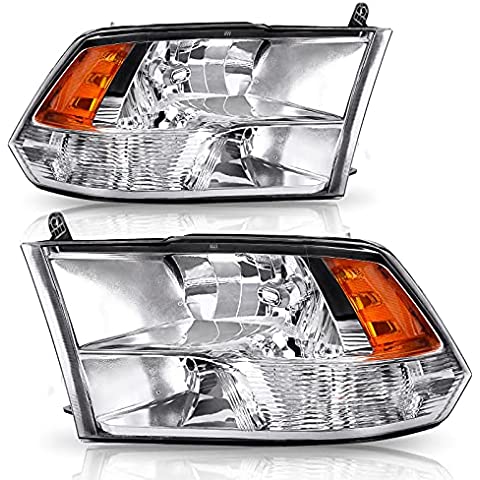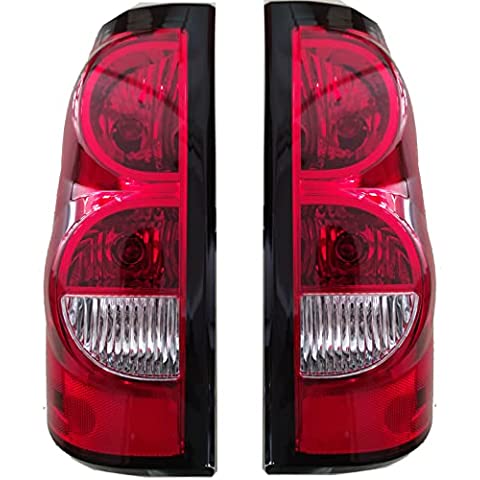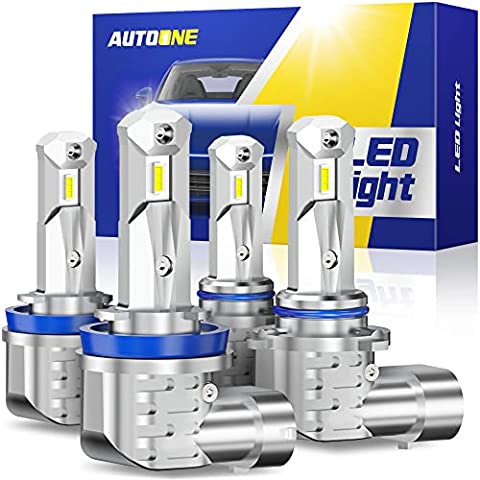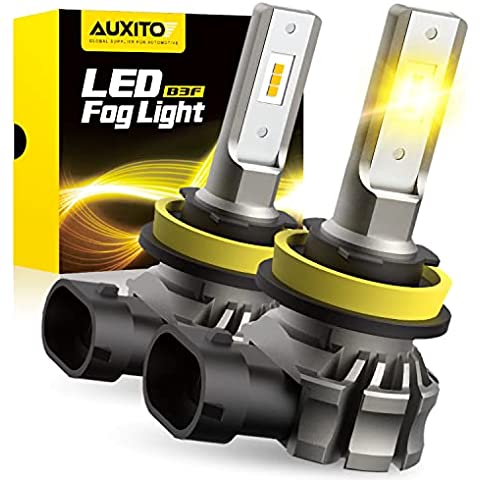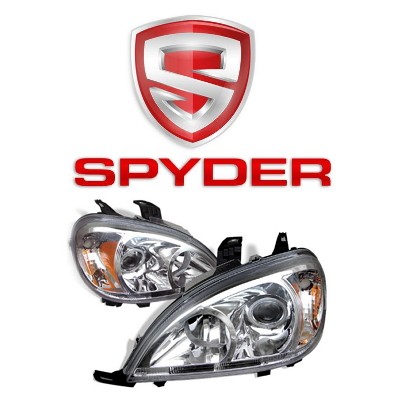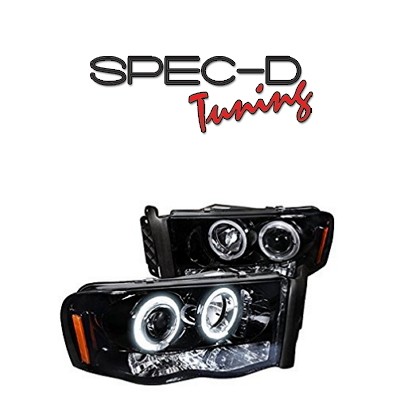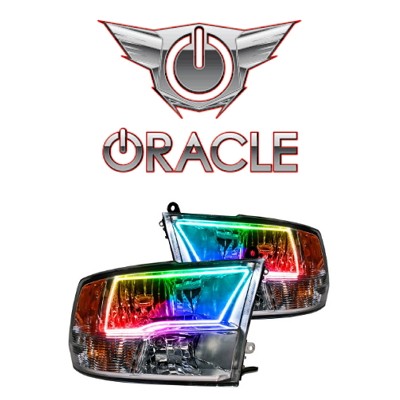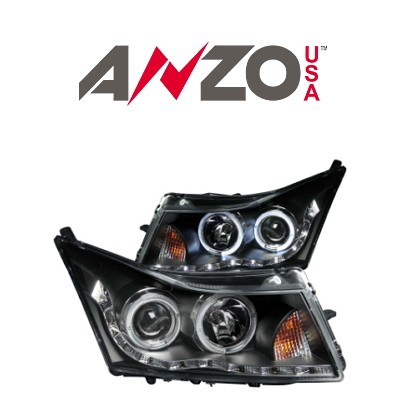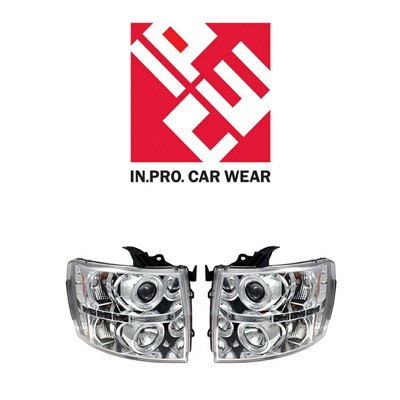Integrated Driver or External Driver – Which Takes the Lead? [Car Headlight Tech Insight]
Buckle up as we cruise through the fantastic world of LED headlight technology. For all you car aficionados and tech enthusiasts, LED headlights are like the cherry on top of a delicious sundae – they’ve got longevity, unparalleled brightness, and energy smarts. But wait, there’s a fork in the road! Should we take the integrated driver lane or the external driver boulevard? Let’s steer through this with some nifty tech talk and a splash of fun.
Products are available — click below to view them!
SEE DETAILS ON EBAYIntegrated and External Drivers [In the Garage]
LED drivers are the trusty sidekicks to your LED bulbs – think Batman and Robin. They’re the guardians, making sure your LEDs have the juice they need without going overboard.
Integrated Driver
Imagine a gadget that’s got everything packed into one neat little package – that’s your integrated driver. It’s part of the LED bulb, making the whole setup look like one piece of headlight art. It’s got the bulb, wire, and plug all in harmony.
External Driver
Now, picture an LED bulb with a sidekick box. That’s your external driver, always by its side but not integrated. It connects first to the LED bulb and then makes a handshake with the plug.
![Integrated Driver or External Driver - Which Takes the Lead? [Car Headlight Tech Insight] LED car headlight bulbs with external driver vs internal driver for high and low beams, H7 bulb size](https://halo-headlights.com/wp-content/uploads/2023/06/LED-car-headlight-bulbs-with-external-driver-vs-internal-driver-for-high-and-low-beams-H7-bulb-size.jpg)
Circuit Board Central [Under the Hood]
We’re tinkering with the LED headlight bulb driver, and voila – we have the PCB (Printed Circuit Board). It’s like the backbone, keeping everything connected and running like a well-oiled machine. It’s thin and made of various materials – the unsung hero of the LED headlights.
Headlight Showdown: Integrated vs. External Drivers
Comfy & Cozy: Integrated Drivers
Integrated drivers are like having your cake and eating it too – space-saving and a breeze to install. With everything packed in, you have more room in the headlight housing and better airflow. Nifty, isn’t it?
Extra Space, Please: External Drivers
With external drivers, you need a bit more legroom inside the headlight housing. If the driver is like a big ol’ suitcase, installation can be snug for some headlights.
Design Complexity
![Integrated Driver or External Driver - Which Takes the Lead? [Car Headlight Tech Insight] Vehicle driving with the headlights on at night when it's foggy](https://halo-headlights.com/wp-content/uploads/2023/06/Vehicle-driving-with-the-headlights-on-at-night-when-its-foggy.jpg)
Integrated Driver: A Tightrope Walk
Integrated drivers need precision – it’s like solving a Rubik’s cube. Everything has to fit just right, and you need some solid tech skills. It’s for the virtuosos in the headlight-making world.
External Driver: Breathing Room
External drivers have some wiggle room. The layout isn’t as tight, and it’s easier to piece together the components. It’s like playing with building blocks – still needs skills but is more forgiving.
Power and Heat Tango
LED headlights with external drivers can flex their muscles with higher power. Integrated drivers have to be a bit more composed because they need to manage the heat in a smaller space.
Heat Dissipation: The Cooling Dance
Both types usually come with fans to keep things chill. But, external drivers can break a sweat and still keep cool better than integrated drivers.
Finish Line: The Verdict
Both integrated and external drivers have their pros and cons. It’s like choosing between chocolate and vanilla – it depends on your taste.
Now, here’s a sweet treat: Torchbeam T2 LED Headlights with an External Driver. These babies are not just powerful, they’re sleek, and their Canbus drivers are like the brainiacs of the LED world – smart and error-free.
So, my fellow car enthusiasts, next time you’re in the market for LED headlights, think about what you need, what your car can handle, and what makes your heart rev with excitement.
![Integrated Driver or External Driver - Which Takes the Lead? [Car Headlight Tech Insight] certified mechanic at Halo Headlights](https://halo-headlights.com/wp-content/uploads/2018/05/certified-mechanic.jpg) Steven is a certified mechanic and technical writer at Halo Headlights. Steven is excited about fast cars, loud music, and car mods. On a yearly basis, he visits SEMA, as well as other car shows.
Steven is a certified mechanic and technical writer at Halo Headlights. Steven is excited about fast cars, loud music, and car mods. On a yearly basis, he visits SEMA, as well as other car shows.
He has installed thousands of HID and LED kits and done hundreds of custom headlight retrofit projects. Now, he is ready to share his experience with Halo-Headlights.com readers.
Questions and Answers
Q: What are LED headlights, and how do they differ from traditional halogen bulbs?
A: LED headlights use Light Emitting Diodes to produce light. They are known for their efficiency, brightness, and longevity. In contrast, halogen bulbs use a filament and halogen gas. LED headlights generally use less energy, produce brighter light, and last much longer than halogen bulbs.
Q: What does an LED driver do?
A: An LED driver acts like a chaperone, regulating the power supplied to the LED headlight. It ensures that the LED receives the appropriate current and voltage to operate optimally, preventing any damage due to fluctuations.
Q: What’s the main difference between integrated and external drivers?
A: Integrated drivers are built into the LED bulb itself, making for a more compact design. External drivers are separate units connected to the LED bulb. External drivers usually allow for higher power and better heat management, while integrated drivers are often easier to install.
Q: Are LED headlights legal?
A: In the U.S., LED headlights are legal as long as they comply with federal standards. It’s essential to ensure that the headlights are properly aimed and do not blind oncoming traffic.
Q: How do I choose between integrated and external drivers?
A: Think about your priorities: if you need ease of installation and a compact design, go for integrated. If performance and heat management are more critical, external drivers might be the better choice. Also, consider the space available in your car’s headlight housing.
Q: How long do LED headlights typically last?
A: LED headlights can last over 30,000 hours, which is significantly longer than halogen bulbs which average around 1,000 hours.
Q: Can LED headlights improve my night driving experience?
A: Absolutely! LED headlights are known for their bright, clear light which can significantly improve visibility when driving at night.
Q: Are LEDs more energy-efficient than halogens?
A: Yes, LEDs use less power and convert more of that power into light, making them more energy-efficient compared to halogen bulbs.
Q: What is a Canbus system, and why is it important?
A: A Canbus system is essentially a network that allows various parts of your car to communicate without a central computer. Some LED headlights have Canbus drivers that ensure compatibility with your vehicle’s electrical system, preventing error messages.
Q: Can I install LED headlights myself, or should I visit a mechanic?
A: If you’re technically inclined and comfortable with car maintenance, you might be able to install LED headlights yourself. However, if you’re not confident or the installation involves complex wiring, it’s best to consult a professional.
Q: How do I ensure my LED headlights are aimed properly?
A: Proper alignment is crucial to avoid blinding other drivers. You can check the headlights against a flat surface like a garage door. If unsure, it’s best to have them aligned by a professional.
Q: Do LED headlights work well in all weather conditions?
A: LED headlights perform well in most weather conditions. However, since they don’t produce as much heat as halogens, they might not clear snow and ice from the lens as effectively in extreme winter conditions.


